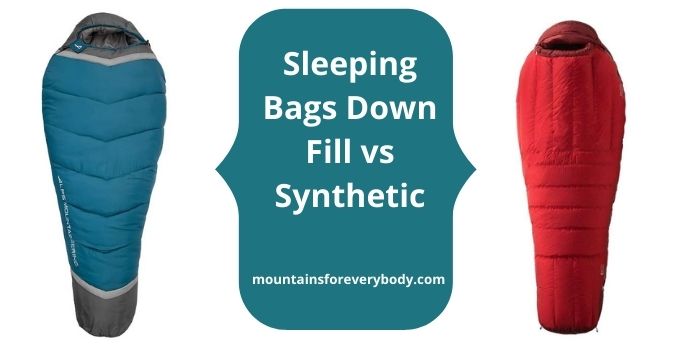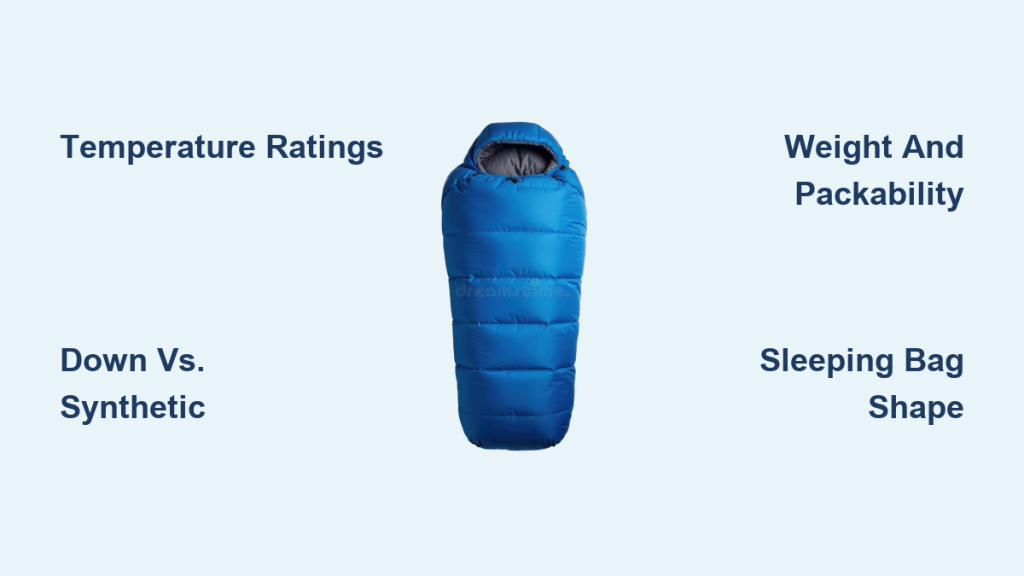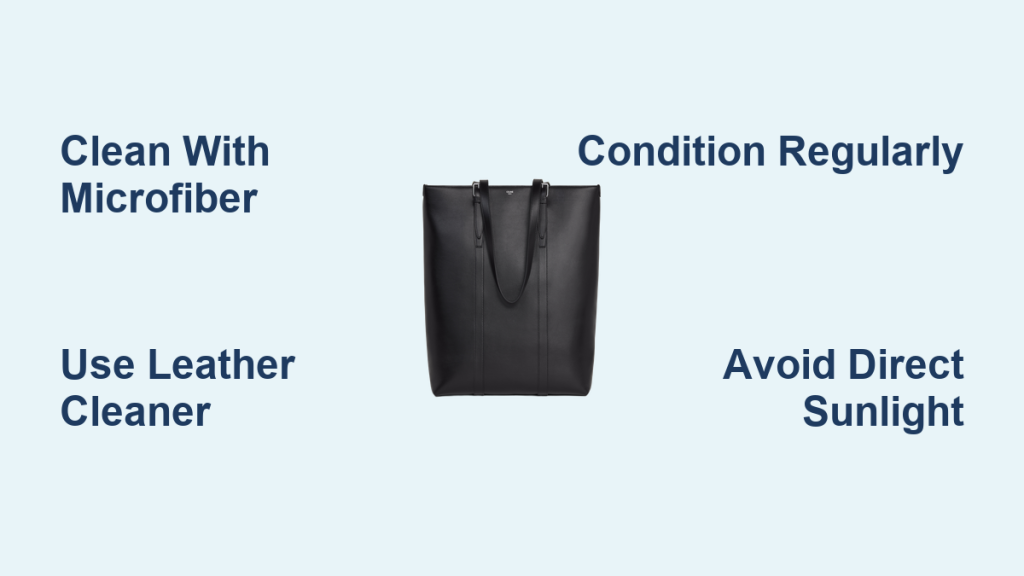Backpacking is an incredible way to connect with nature, but a cold night can quickly ruin even the most scenic adventure. Choosing the right sleeping bag is crucial for a comfortable and safe trip. If you’re overwhelmed by the options, don’t be! A quick first step is understanding temperature ratings and bag fill – down vs. synthetic.
This comprehensive guide will break down everything you need to know to select the perfect backpacking sleeping bag, from understanding temperature ratings and fill types to considering shape, weight, and features. By the end, you’ll be equipped to make an informed decision and enjoy warm, restful nights under the stars.
Understanding Temperature Ratings
Temperature ratings are a key factor in choosing a sleeping bag, but they can be confusing. Here’s what you need to know:
EN/ISO Testing Standards
Most reputable brands now adhere to the EN (European Norm) or ISO (International Organization for Standardization) testing standards. These standards provide a more consistent and reliable assessment of a bag’s thermal performance. Look for bags with these ratings.
Comfort, Limit, and Extreme Ratings
- Comfort Rating: The temperature at which a “warm sleeper” (typically a woman) can sleep comfortably.
- Limit Rating: The temperature at which a “cold sleeper” (typically a man) can sleep comfortably. This is often the rating most brands advertise.
- Extreme Rating: The survival-only temperature – the lowest temperature at which a bag will prevent hypothermia, but you won’t be comfortable. Do not rely on this rating for typical use.
Personal Considerations
Your individual sleep temperature is influenced by metabolism, body fat, and clothing. If you tend to sleep cold, choose a bag rated lower than you think you need.
Down vs. Synthetic Sleeping Bag Fill

The fill material dramatically impacts a sleeping bag’s warmth, weight, compressibility, and price.
Down Fill
- Pros: Superior warmth-to-weight ratio, highly compressible, long-lasting.
- Cons: Expensive, loses insulation when wet, requires careful cleaning and storage.
- Fill Power: A measure of down quality (600-fill power is good, 800+ is excellent). Higher fill power means more warmth for less weight.
Synthetic Fill
- Pros: More affordable, retains insulation when wet, easier to care for.
- Cons: Heavier and bulkier than down, less compressible, doesn’t last as long.
- Types: Polyester, PrimaLoft, and other proprietary blends. PrimaLoft offers a good balance of warmth, weight, and compressibility.
Sleeping Bag Shapes Explained

The shape of your sleeping bag impacts warmth, weight, and space.
Mummy Bags
- Shape: Tapered design that minimizes dead air space.
- Pros: Most efficient for warmth, lightweight.
- Cons: Can feel restrictive for some sleepers.
Semi-Rectangular Bags
- Shape: A blend of mummy and rectangular shapes.
- Pros: More room to move than mummy bags, still relatively warm.
- Cons: Slightly heavier and bulkier than mummy bags.
Rectangular Bags
- Shape: Traditional rectangular shape.
- Pros: Most spacious and comfortable.
- Cons: Heaviest and bulkiest, least efficient for warmth. Not recommended for backpacking.
Weight and Packability: Key for Backpacking

Every ounce counts when you’re carrying a backpack.
Ultralight Bags
- Weight: Under 2 pounds.
- Best For: Experienced backpackers prioritizing weight savings.
- Considerations: Often more expensive, may require careful handling.
Lightweight Bags
- Weight: 2-3 pounds.
- Best For: Most backpackers seeking a balance of weight and durability.
Heavier Bags
- Weight: Over 3 pounds.
- Best For: Car camping or situations where weight is less critical.
Compression Sacks
Invest in a compression sack to minimize the bag’s packed size.
Essential Sleeping Bag Features
Beyond the basics, consider these features:
Hood
A well-designed hood traps heat and provides crucial warmth for your head and neck.
Draft Collar
A padded collar around the neck prevents warm air from escaping.
Draft Tube
A tube of insulation running along the zipper prevents cold air from seeping in.
Zipper Length
- Full-length zipper: Offers maximum ventilation and allows the bag to be opened flat.
- Half-length zipper: Saves weight and reduces bulk.
Internal Pockets
Useful for storing small items like a headlamp or phone.
Pro Tips for Choosing and Using Your Sleeping Bag
- Layering is Key: Wear appropriate base layers and socks to maximize warmth.
- Waterproof Bivy Sack: Consider a waterproof bivy sack for added protection in wet conditions.
- Pre-Treat Down Bags: Use a down-specific waterproofing treatment to enhance water resistance.
- Proper Storage: Store your sleeping bag loosely in a large storage sack to maintain loft. Never compress it for long-term storage.
- Air it Out: After each trip, air out your sleeping bag to remove moisture and prevent mildew.
When to Seek Professional Advice
- Unsure about Temperature Ratings: If you’re backpacking in extreme conditions, consult with an experienced outfitter.
- Persistent Cold: If you consistently feel cold despite using a properly rated bag, consider consulting a medical professional to rule out any underlying health conditions.
- Down Bag Cleaning: Professional cleaning is recommended for down bags to ensure proper care and maintain loft.
FAQ
Q: What temperature bag should I get for summer backpacking?
A: A 30°F to 40°F rated bag is generally sufficient for summer backpacking, but consider the specific elevation and location.
Q: How do I clean a down sleeping bag?
A: Use a down-specific detergent and follow the manufacturer’s instructions. You can wash it in a front-loading washing machine or hand wash it. Always tumble dry on low heat with dryer balls to restore loft.
Q: Is a waterproof sleeping bag worth it?
A: While fully waterproof bags are rare, a water-resistant bag or a combination of a water-resistant bag and a waterproof bivy sack is a good investment for wet conditions.
Q: How do I know if my sleeping bag is losing insulation?
A: Check for cold spots or areas where the bag feels thin. If you notice a significant loss of loft, it may be time for a new bag.
Alternative Solutions
| Solution | Pros | Cons | Best For |
|---|---|---|---|
| Sleeping Bag Liner | Adds warmth, keeps bag clean, lightweight | Adds weight, may not be enough for extreme cold | Adding a few degrees of warmth, hygienic use |
| Bivy Sack | Adds weather protection, lightweight | Can be claustrophobic, may add condensation | Wet conditions, minimalist backpacking |
| Quilt | Lightweight, versatile | Requires a sleeping pad for ground insulation, less warm than a full bag | Warm-weather backpacking, experienced users |
Enjoy Your New Sleeping Bag!
Now that you’ve chosen the right sleeping bag, you’re well on your way to comfortable and enjoyable backpacking adventures. Remember to consider the temperature ratings, fill type, shape, weight, and features to find the perfect fit for your needs.
Don’t hesitate to share your experiences and ask questions in the comments below – we’re here to help you gear up for your next outdoor adventure!




